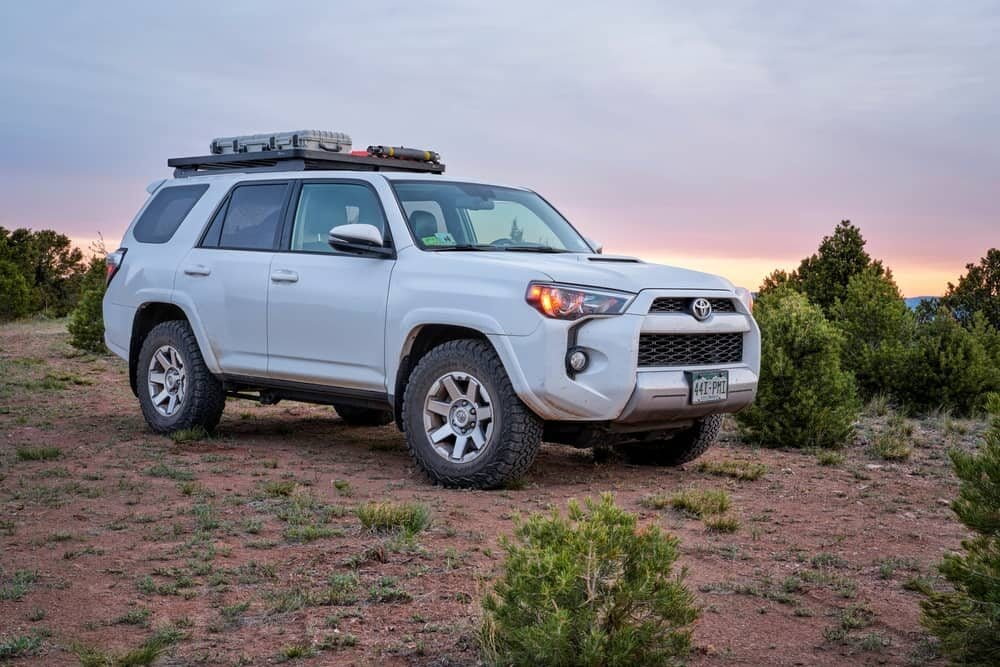How Much Should You Lift a 4Runner?
Adding a lift to your 4Runner might turn the heads of other vehicle owners, but there are also practical advantages to it (aside from looking cool). But, deciding how much to lift can create some confusion. And there are a few things to consider before trying to lift your 4Runner.
Essentially, how much you lift your 4runner will depend on how you’ll use it, how much you want to spend, and the type of lift you prefer. For appearance, raising your 4Runner no more than 3 inches can work but may be less safe. For off-roading purposes, lifting 2 to 3 inches should give you the height to clear rough terrain without danger to you or the 4Runner.
Still on the fence about lifting your 4Runner or how much to lift? I’ve provided a breakdown of the pros, cons, and costs to help you make a clearer decision!
How Much Should I Lift?
You’ll want to consider a few things when deciding how much to lift your 4Runner, such as how you will use the lift kit, the necessary modifications to your 4Runner, and the size your tires will need to be to accommodate your lift.
For off-roading purposes, a good amount of lift can be 2 to 3 inches. Anything higher than that might cause poorer handing in steering, braking, and a higher chance of rolling.
Your Purpose For the Lift
If you’re thinking of lifting your vehicle purely for appearance, you may be better off not getting one. Many reviewers say that even though it looks tough and cool, on-road performance may take a hit the higher the vehicle is lifted.
This is the case with a 4Runner, since lifting yours more than 3 inches can be dangerous and cause the vehicle to perform worse on the road.
But if you do a lot of off-roading, then lifting it a good few inches can be super beneficial to help protect the underside of your 4Runner.
A maximum of 3 inches is a safe bet and can give you the space to clear large rocks or rough terrain smoothly and effectively.
Modifications You Might Need
Lifting can be a great idea if you want to make changes to your OEM 4Runner.
Some modifications will need to be made if you want a higher lift, like bigger tires and an adjustment to spacers and coils, upgrading to shocks, and long-travel suspension.
The Tire Size
For certain lifts (such as a suspension lift), you’ll need to have a few modifications done to parts of your 4Runner, especially if you do a lot of off-roading.
One of these is the tire size. The amount you lift your 4Runner will go hand in hand with the size of your tire. With that being said, higher lifts will require you to need larger tires.
The Pros Explained
Putting a lift kit on any vehicle can turn some heads because it makes them stand out among others. If your goal is to make your 4Runner look good, then installing a lift kit can make it happen.
Aside from the appearance, a more practical advantage to lift kits is the ease and safety of off-roading.
The higher your lift, the more clearance you’ll have which can be handy when you’re driving on rocky, muddy roads. Off-roading can even be easier due to the bigger and better tires you’ll use to accommodate your new lift.
You can see what’s ahead in a regular vehicle, but that doesn’t make your vehicle easily noticeable. With a higher lift, there’s no doubt that other cars will see you, which can avoid accidents.

The Cons Explained
Gas mileage will take a hit when you lift your vehicle more than 3 inches. Due to more weight, mostly from larger tires and other modifications, your 4Runner will have more drag.
If there’s more drag, your vehicle will require more power to get it going, which can cause you to burn up gas quicker.
Toyota 4Runners are reported to be top heavy and easier to roll due to having an already higher center of gravity. Lifting your 4Runner higher than 4 inches can be more dangerous since your center gravity is thrown off and the chances of tipping on sharp turns are higher.
While leveling kits don’t affect overall performance as much, other kits that raise the suspension may cause instability on the road, causing tougher handling.
How Much Would a Lift Kit Cost?
Costs of a lift kit can vary depending on whether you want to install it yourself, the type of kit, the model of your 4Runner, and how you get the kit installed.
Lift kits costs can range anywhere from $300 to $4,000 when you consider professional installation, your preferences, and the type of kit.
Type Of Lift
There are different ways to lift your vehicle, all of which vary in price and purpose: body lift kits, leveling kits, and suspension lift kits. Choosing the best lift might also be a hassle, so here’s a summary of the different types.
Body lift kits
These kits raise the body of your vehicle a few inches (or however many inches you want) while leaving your suspension at its regular height. Body lifts are pretty cost-effective, don’t affect handling as much or at all, and don’t typically require any modifications.
Leveling kits
These can run from $100 to $300 and are used to balance the level between the nose and tail of a truck (or a 4Runner). This kit raises the front about 1-2 inches to match the back, which usually is raised in case a truck or vehicle carries heavy loads.
Suspension Lifts
The last type of kit is the suspension kit, where the height of the suspension is raised. The installation for this type of kit is more complicated and more expensive (around $1,000 to $5,000).
Model of Your 4Runner
Toyota has many make and models and some years have been better than others.
With older generations of a Toyota 4Runner, finding a lift kit may be harder and more expensive, since the newer generations have more advanced parts.
If you have the first through third generations, you may spend more money getting parts modified for expensive lifts than the fifth generation.
You will need to look at your model year to figure out which parts are good to go for a lift and which ones are not.
Professional Installation
While it isn’t impossible to install the lift kit on your own, it will probably take a long time unless you are professional or have experience with that kind of thing.
Labor fees for installing a lift kit can be around $300, without the cost of the actual lift kit.
So, the cost for installation may be a bit costly, but you can rest assured that a professional has their hands on it and that it can be done quicker.

The Bottom Line
Overall, if you are going for a jacked-up appearance, lifting a 4Runner may not be the best option since lifting higher than 3 or 4 inches can spell danger to you and your cargo.
If you mainly do off-roading, lifting your 4Runner 1.25 to 3 inches can be fine to allow you to clear the debris and rough terrain without tearing up the bottom parts.
Any modifications you’ll want or need, the use intended for the lift, and your budget will determine how much you want to lift. The cost is the same, depending on how you go about getting a lift.
Getting it professionally done but with only a leveling kit or body, a lift will be less expensive than a full-blown suspension lift kit.
Overall, you should lift your 4Runner 1.25 at a minimum and 3 at a maximum.
